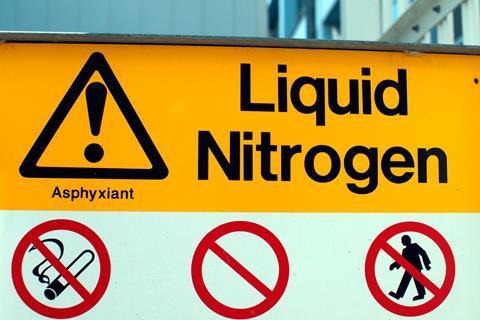Incident that killed six workers resulted from multiple equipment and process failures

Almost three years after a liquid nitrogen release at a chicken processing plant in Georgia killed six workers and hospitalised several others, the US Chemical Safety and Hazard Investigation Board (CSB) has concluded that the incident was triggered by multiple equipment and process failures, and made much more severe by inadequate emergency preparedness.
Specifically, the CSB found that a bent ‘bubbler tube’ allowed the room to fill with an unsafe level of liquid nitrogen that quickly vapourised into a four- to five-foot-high deadly cloud that caused six employees of the Foundation Food Group (FFG) to die by asphyxiation. Three other workers and a firefighter who responded to the incident were also seriously injured from suffocation.
Importantly, the agency determined that the accident’s severity was made significantly worse by FFG’s inadequate emergency procedures and training. These lapses led to a situation where at least 14 employees entered the freezer room or the surrounding area to investigate the incident or try to rescue coworkers. In particular, the CSB found that the facility failed to install air monitoring equipment and warning alarm devices that could have alerted workers about the hazardous vapour cloud and cautioned them against entering the freezer room. The CSB’s chairperson, Steve Owens, called the fatal accident a ‘needless and senseless tragedy’ that was ‘completely preventable.’
Based upon the findings in its new report, the CSB urges the US Occupational Safety and Health Administration (OSHA) to issue a national standard to address the hazards arising from the storage, use, and handling of cryogenic asphyxiants, including liquid nitrogen. The agency also calls on the Compressed Gas Association – the trade association for the US industrial and medical gas supply industries – and the US-based nonprofit National Fire Protection Association to improve their guidance on the safe use of cryogenic asphyxiants like liquid nitrogen.
‘The lack of safety oversight by FFG leadership, absence of a systematic process hazard analysis, lack of written procedures, lack of any management of change practices, and failure to communicate hazards resulted in the unmitigated handling of a cryogenic asphyxiant by untrained and unprepared personnel,’ the CSB’s report concludes.

















No comments yet